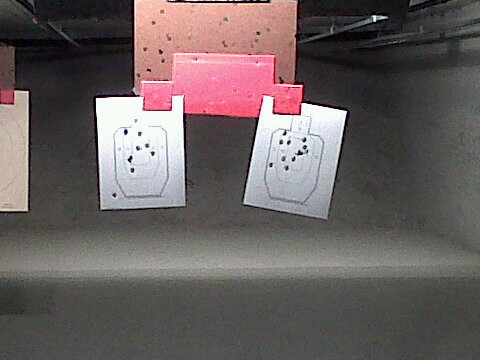In June of this year, two nutjobs walked into a pizza restaurant in Las Vegas, and shot the place up, and killed two police officers, Alyn Beck and Igor Soldo. (I will not use the names or likenesses of the killers, as you know.)
They then proceeded to Wal-Mart, and opened fire there as well. There, Joseph Wilcox, a licensed concealed firearms carrier, decided to intervene, and was killed.
Caleb Giddings posted an editorial on GunNuts shortly afterward about lessons we can learn from this shooting. In it, he points out that, while Wilcox is to be commended for making the tough decision to get involved, he had no moral duty to do so.
Later, Miguel at Gun Free Zone offered his view on incident:
The question remains: what would you do if you see an active shooting situation and you are not in immediate danger? Do you run to safety or do you engage? You decide, I can’t tell you what to do. I can only tell you what I will do: I will engage if I can.
Miguel likens an active shooter incident to a First Responder incident, where we should offer medical attention to anyone who is injured.
++++
Then, last week, armed robbers tried to hold up a bar in Texas at closing time, and 2 of them were shot dead by what everyone is calling a hero.
I can’t use this man’s name, as no one knows for sure who this hero was, because he left the scene. Why? Because, unlike in Georgia, carrying a gun in a bar in Texas, licensed or not, is a felony. And he, understandably, did not want to go to jail.
++++
These incidents highlight something we all need to give serious thought to: everyone who owns a gun, whether they carry or not, needs to have Rules of Engagement – a set of guidelines of what you would do when confronted by various situations. The scenarios need to range from home invasion to active shooters to civil unrest.
To me it isn’t enough to just vaguely think about these things. We ought to actually list them out, and write out what our response would be. Knowing and following these rules then becomes part of your training, so that you know what you are going to do, just like whether you will perform a tactical reload or not, or whether you will reholster or not.
I did this, several years ago, and I have shared this with my family. That way, if they happen to be with me when such an incident occurs, they will know how I am going to act, and they will know how to act themselves, in a way that doesn’t get them hurt.
For instance, everyone in my family knows that when we go out to dinner, I get a seat facing the door. If we are in a booth, I get to sit on the end. These should be obvious, but we discussed them nevertheless. Yes, they can become a humorous item at times, but they still get followed.
++++
This leads me to the real topic of this post, which is that my Rules of Engagement differ from Caleb’s and Miguel’s, because unless I or my family or those I am tasked to protect are threatened, I won’t engage. I am not here to be a hero, and if you are not my family or in my care, I am not here for you.
On the other hand, I am willing to do whatever it takes to protect my family. When it was illegal to carry in restaurants or bars in Georgia, that meant I was willing to go to jail to save them, if I had to.
I still am, because their lives are worth more to me that freedom. And, if by my actions I can show how silly some law is, and it gets changed, all the better. I hope lawmakers in Texas will see that the laws prohibiting carry in bars did nothing to dissuade the robbers, so they need to be changed.
I can list a myriad of reasons for my rules, but the best one, sadly, is the reason Joseph Wilcox died in Wal-Mart – Uncertainty. He engaged a target, not knowing there was another, and that target killed him.
I am going to limit my uncertainty. I am willing to allow it in order to defend myself or my family, but beyond that, no.
That, of course, is something you will need to decide for yourself.

